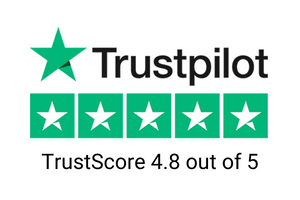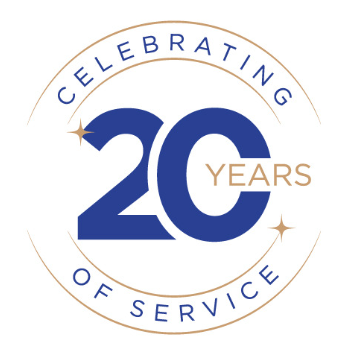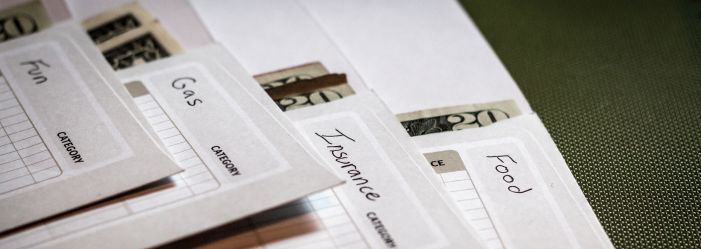Last Updated: April 09, 2024
Envelope Budgeting Tips for Expert Money Management
Disclaimer: We are not qualified legal or tax professionals and are not giving advice. Always speak with a qualified professional before making any legal or financial decisions.
In today’s fast-paced, digital world, the age-old envelope budgeting system is making a surprising yet powerful comeback. Rediscovered by a new generation on social media platforms such as TikTok, this tried-and-true method offers a tangible approach to managing finances with a modern twist.
Whether you're dealing with physical cash or leveraging the latest budgeting apps, envelope budgeting provides a straightforward, effective way to oversee your spending and savings.
In this comprehensive guide, we'll explore the nuts and bolts of envelope budgeting, how it fits into the digital era, and why it might just be the strategy you need to transform your financial management.
Don't want to read through? Speak to a debt specialist right now.
What is the envelope budgeting system? And how does it work?
Basically, you use budget envelopes to keep track of your money and divide it into different expenses or spending categories. You can include everything from all your expenses to just savings goals.
Probably the simplest is to use this type of budgeting to manage money after your fixed expenses are paid. Fixed expenses would be items like rent or mortgage, car loans, and insurance payments, as well as utilities and other expenses that do not vary much.
You then take out all leftover money and divide it into your spending categories or envelopes that are dedicated to certain expenses. You either pay cash for those expenses or deposit all the money into your bank and pay from there.
Since this is the 21st century, there are also mobile apps for envelope budgeting. This eliminates the need to have lots of physical cash just sitting around!
The Pros And Cons Of Using Cash Envelopes For Budgeting
As with any budgeting method, there are pros and cons. This system may not work for everyone or for all families.
Pros of cash envelopes
- Plan the month ahead of time - envelopes make you decide where and how to spend leftover income each month.
- Sticking to the limits forces you to now overspend - it does take discipline, making this both a pro and a con
- Encourages you to "pay yourself first" by setting aside savings
- Effective as long as you do not resort to using credit cards as a backup
- Can be an emergency fund - although you then need to restrict your spending
- Spending becomes something you can see and touch - unlike the credit card "buy now, pay later" mindset
- No more overdraft fees!
- More likely to spend mindfully (studies show that people spend 10 to 15% less when they use cash)
- Hopefully, there are no more forgotten bills!
- Limits impulse purchases
Cons of cash envelopes
- Doesn't work with online bill paying or purchases unless you use an app
- Must carry cash or be disciplined enough to use an app
- As with all budgets, it requires time and effort
- May not work with partners or may require a lot of communication
- If you run out of money before the next payday, you are out of money - no cheating with credit cards to make it to the end of the month
- Bank or ATM runs are not always convenient
- Allocating expenses from envelopes can be time-consuming, especially if you shop at a big box store and buy, say, groceries and clothing at the same time
How To Use The Cash Envelope System For Budgeting
If you want to try the envelope system, you will need to work through several steps as outlined below.
Step 1) Write down where all your money is going - you may need to collect receipts, especially for cash purchases.
Step 2) Write down all your sources of monthly income.
Step 3) Determine your fixed or constant monthly expenses.
Step 4) Subtract those expenses from your income - you now have how much money you have to spend on items like:
- Groceries
- Entertainment
- Dining out
- Gas
- Clothes
- Personal care items
- Miscellaneous
- Savings
- Debt reduction
- Future purchases
If for some reason, there is no leftover cash, you need to cut some expenses!
Use The Cash For All Your Monthly Expenses
Step 5) Determine where you will spend your money left at the end of each pay period. You should have an idea of how much you spend in different categories from Step 1.
Set Up Your Envelopes
Step 6) Set up the envelopes. Label each one and put the dollar amount you expect to need each month into the corresponding envelope. Some people use small accordion files instead of envelopes.
Assign Budget Amounts to Each Envelope
Step 7) Take out the unspent money for each paycheck and prioritize how much money is going into each envelope. If you do not have enough, you need to cut those expenses.
Spend the Cash in Each Envelope
Step 8) Use the money as budgeted. Remember, you do not need to spend ALL of each category and you should pay yourself a bit each month towards financial goals.
Step 9) Any leftover cash can be rolled onto the next month or better yet, out into a savings account or to pay down debt.
Track your spending
Step 10) Last but not least, adjust your budget as needed.
You can also use this system for all your monthly expenses but this can be annoying to run to the bank to deposit money.
Using the envelope budget system with mobile banking
The digital approach is to use an envelope budgeting app, especially if you transact most of your financial business online.
Some allow you to link with your financial institutions, others require you to enter each bill by hand.
The Pay Yourself First Method
Regardless of which budgeting system you use, paying yourself first is one of the most important steps you can take. Ideally, you set aside a percentage of each paycheck into a savings account.
That money can then be divided into future purchases, emergencies, vacations, retirement, or other savings.
Some employers will allow you to have your paycheck split with a percentage going directly into savings.
Once you have enough money saved up, transfer it to different accounts such as an IRA for retirement or an online savings account for emergencies. You'll get better returns, save money and be less likely to spend it!
If you cannot set aside money before all your bills are paid, roll any leftover money into savings.
Alternatives to the envelope budget system
If you don't feel like having cash unsecured in your home, consider using gift cards. Use different gift cards for different categories.
Look for gift cards without fees or expiration dates. Ones that can be reloaded are great.
Prepaid debit cards are a similar option.
Set up different bank accounts or sub accounts for different types of purchases.
Track spending after every purchase to see how much cash remains in each category.
Adding it all up: Is envelope budgeting right for you?
This depends on your self-discipline and that of your partner. It is worth trying for a few months to see if it will work if you are single, or having a written plan if your partner is willing to try.
The security of your cash is another factor. If you are robbed or a household member is stealing from you, you will never recover that money.
Budgeting, no matter the method, takes time. If you make the effort and set aside time, it will pay off in the long run.
Conclusion
Budgeting is one of the most important ways that you can get ahead. The budget can be as simple or as complex as you like. The secret is to understand where your money comes from and where it is going.
The cash envelope system creates a tangible budget with visual clues that you have overspent from which every envelope. One of the biggest benefits of using the cash method is that people using cash spend less.
There is no one right way, but if you have a partner, you may want to discuss budgets so that both of you are on the same page and working together.
*Disclaimer: Pacific Debt Relief explicitly states that it is not a credit repair organization, and its program does not aim to improve individuals' credit scores. The information provided here is intended solely for educational purposes, aiding consumers in making informed decisions regarding credit and debt matters. The content does not constitute legal or financial advice. Pacific Debt Relief strongly advises individuals to seek the counsel of qualified professionals before undertaking any legal or financial actions.
✔ Accredited by Better Business Bureau with BBB A+ rating (4.93 rating and 1678 reviews)
✔ US News and World Reports and Bankrate ranked Pacific Debt Relief as one of “The Best Debt Relief Companies of 2024”
✔ 6.9 star rating by BestCompany.com (over 2379 client reviews)
✔ 4.8 star rating by TrustPilot based (over 1613 verified consumer reviews)
✔ ConsumerAffairs.com Accredited (over 544 verified reviews with an average rating of 5 stars)
✔ A Top 10 Rated Compan by TopTenReviews.com , ConsumersAdvocate.com and Top10debtconsolidation.com
✔ 4.6 star rating by Google (229 client reviews)
✔ 100% rating by SuperMoney (9 client reviews)
Reduce Your Credit Card Debt By Up to Half

BBB Reviews | 4.9/5.0 Rating










 Do Not Sell My Personal Information
Do Not Sell My Personal Information